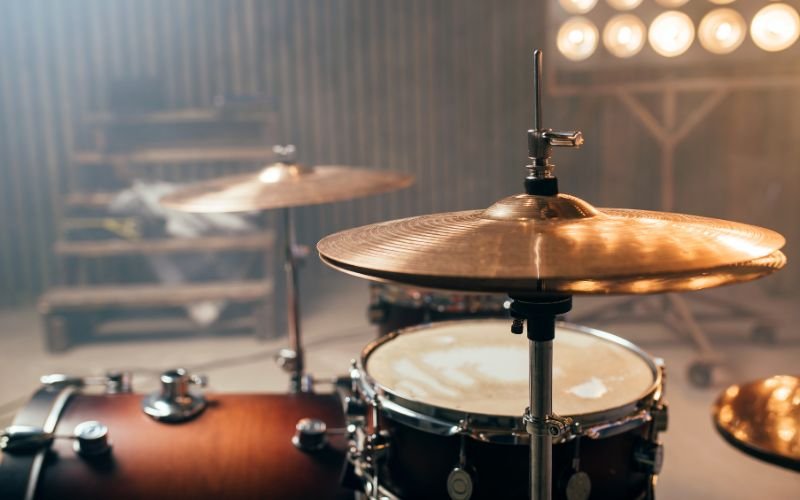Beginner's kit: the essentials for learning music
Do you dream of taking up a musical instrument? Would your child like to learn to play the piano or guitar? While choosing a musical instrument is the first step, you also need to think about the accessories you'll need to get started. So what should you give to someone just starting to learn music? Piano, guitar, violin, drums or CAM, discover the starter pack that's right for you and the essential tools you need to learn music!
Learning music: which instrument is right for beginners?
The choice of a first musical instrument often depends on age, personal affinity and musical aspirations. Children (but also curious adults) might find a kalimba or ukulele suited to their size and learning ability. For fans of electronic music or those interested in computer-assisted music production (CAM), exploring music production software can be an interesting first immersion. Choose an instrument that matches your personal preferences and musical goals. If you aspire to join a rock band, learning guitar or bass will be more useful than learning to play the flute.
Choose an instrument that suits your taste, but also your budget. Yes, the price of musical instruments can go up very quickly! To get off to a good start, go for quality, and choose a mid-range instrument from scale. A good-quality instrument offers a more pleasant learning experience. Even as a beginner, this will enable you to progress more effectively and get the most out of your musical practice. And if your child is the type to get bored quickly, choose a space-saving instrument and avoid drums.
The basics of learning to play a musical instrument
Music learning tools for beginners
Every musician needs to find the right learning method. You can turn to a variety of resources, such as books on music theory, online courses or apps dedicated to music education. These resources are ideal for taking a first step into the world of music and learning a few basics.
Basic accessories for all instruments
Metronome: The metronome is indispensable for maintaining a regular tempo, essential for developing the sense of rythm. For beginners, a simple electronic metronome is all you need.
Tuner: A well-tuned instrument is crucial to producing a harmonious sound. Electronic tuners are handy tools for this, offering different options depending on the instrument. Some models automatically detect the note, ideal for beginners.
Score stand or tablet: A score stand or tablet is essential for reading sheet music while you play. The digital sheet music tablet applications offer a practical solution for storing and displaying sheet music, ideal for beginners on the move.
Page-turning pedal: the page-turning pedal lets you turn the pages of your digital scores without stopping to play.
Headphones: for silent listening during practice.
Recording equipment
Portable recorder: to track your progress and analyze your game.
Recording software: for recording compositions at home or in the studio, or for rehearsing with backing tracks.
Protective accessories and maintenance equipment adapted to your musical instrument
Carrying case: to protect your instrument on the move. Whether you're on your way to a lesson, a rehearsal or a concert, a carrying case offers protection against bumps, scratches and the elements, guaranteeing your instrument's safety.
Maintenance products: to keep your instrument in good working order and extend its life. Depending on the type of instrument, maintenance products can include soft cleaning cloths, lubricating oils, cleaning sprays for keyboards, sponges for wind instruments, etc.
💡 A metronome, tuner and recorder are directly integrated into the Newzik app! And good news, the app is also compatible with Bluetooth tourne pages pedals.
Indispensable accessories for every musical instrument
While the above-mentioned accessories are suitable for all musical instruments, it's also a good idea to choose the right accessories and equipment for each instrument. Playing the guitar will not necessarily require the same equipment as playing the piano, drums, flute or violin, for example.
The essential guitar/bass kit
Chromatic tuner: to keep the guitar in tune.
Pick: choose a pick suited to your playing style.
Capodastre: to modify the guitar's tonality and play in different keys.
Strings: a spare set of strings suitable for your instrument, whether acoustic or electric guitar, bass, violin or any other stringed instrument.
Strap: for comfortable upright playing.
Carrying case: to protect your guitar on the move.
The essential kit for taking up the piano/keyboard
Electronic metronome: for working on rythm and precision.
Sheet music stand or shelf: for convenient storage of sheet music.
Sustain pedals: to extend the duration of notes played.
Protective cover: to protect the keyboard from dust and damage.
Adjustable bench: for comfortable seating during extended practice sessions.
The basic violin kit
Rosin: to maintain the bow and improve sound.
Hard case: to protect the violin on the move.
Shoulders: to support the violin and play more comfortably.
Violin-specific tuner: to maintain precise tuning.
🎼 Have you thought about sheet music? Not always easy to know where to find royalty-free sheet music. To help you, Newzik has compiled 10 sites where you can find piano sheet music and guitar guitar tablatures for free download.
The essential drum kit
Mallets: choose mallets to suit your playing style and personal preference.
Battery mat: to stabilize the battery and reduce vibration.
Tuning key: for quick adjustment of drum heads.
Headphones: for silent practice using practice pads or electronic kit.
Bass drum pedal: to control the response and power of the bass drum.
The essentials for getting started CAM
Computer-aided music (CAM) requires specific tools for creating, recording and producing music.
Audio interface: connect instruments, microphones and speakers to your computer and record audio tracks.
MIDI keyboard: play virtual instruments and compose melodies using your computer.
Music production software: such as Ableton Live, FL Studio, or Logic Pro, to record, edit and mix your tracks.
Monitor headphones: for precise listening to your music.
Studio monitors: for accurate, balanced listening to your music during production.
MIDI controller: for intuitive, tactile manipulation of music production software parameters.
Microphone kit: for recording vocals, acoustic instruments and percussion.
Audio cables: to connect your instruments, microphones and audio equipment to your audio interface.
What if I want to set up my own home studio?
Of course, you can learn to play guitar, piano or any other instrument in any room of your home. However, if music is becoming more and more a part of your life, you might consider setting up a home studio dedicated to practicing your instrument. To do this, choose a quiet, large enough room in your home for your home studio. Make sure it offers adequate insulation and a comfortable space to set up all your equipment.
🎶 Starting to learn a musical instrument? Discover theNewzik application ! Whether you're playing on your own, in a band or taking music lessons remotely, you'll be able to find and annotate all your scores in real time. Let's play!

